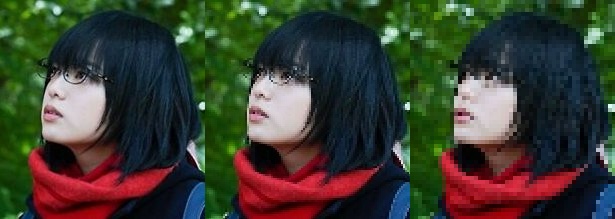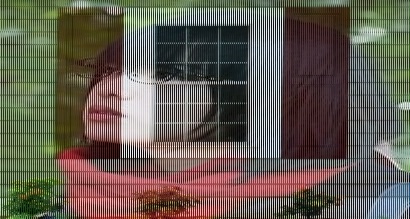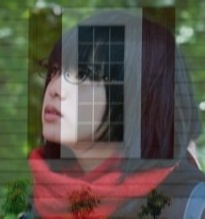Image Pyramids
Image Downsampling
Initial thought
To resize of image to \(\frac{1}{n}\), resample the image by picking pixel per \(n\) pixels
Problem: Aliasing
Occurs when sampling rate is not high enough to capture the amount of detail in the image.
Below is an extremum, which we lost half of the important information
Nyquist rate
To avoid such aliasing issue, one should sample at least \(2\times \max{f}\), i.e. at least twice the highest frequency.
With twice the frequency, we can make sure the information is caught, while in other cases, it might not be true
Gaussian pre-filtering
When downsampling, the original image has too high frequencies, results in information loss. The high frequencies are caused by shape edges, hence we can smooth the image to filter out high frequencies, with a low-pass filter
Gaussian Pyramids
A sequence of images created with Gaussian blurring and downsampling is called a Gaussian pyramid or mip map
Image Up-Sampling
Interpolation
Since an image is a discrete point-sampling of a continuous function, i.e. \(F(x,y) = quantize\{f(x/d, y/d)\}\). If we could somehow reconstruct the original continuous function, we can generate the image with any resolution and scale.
However, we are unable to obtain such \(f\), but we can guess an approximation
Nearest neighbor
Linear interpolation
Given \(x \in [x_i, x_{i+1}], G(x) = \frac{x_{i+1}-x}{x_{i+1}-x_i}F(x_i) + \frac{x-x_{i+1}}{x_{i+1}-x_i}F(x_{i+1})\)
Via Convolution 1D
To upsampling a line \(F= p_1, p_2, ..., p_n\),
insert \(n*0\)s between \(p_i, p_{i+1}\), make into \(G = p_i. 0, 0, ..., 0, p_{i+1}\)
Take convolution filter \(h = [0, 1/d, 2/d, ..., d/d, (d-1)/d, ... 0]\)
\(h*G\) is desired
Similar idea goes to 2D
Bilinear interpolation
Given \(Q_{00}=(x_0,y_0), Q_{01}=(x_0, y_1), Q_{10}=(x_1,y_0), Q_{11}=(x_1,y_1)\).
Interpolate along \(x\)-axis
Then, interpolate along \(y\)-axis
Therefore, suppose \(\|x_1-x_0\| = \|y_1-y_0\| = 1\), i.e. the 4 points form a unit square, and let \(x-x_0 = d_x, y-y_0 = d_y\).
Which can be represented by the dot product of \(\vec v^T \cdot \vec v\) where \(v\) is the vector filter in 1-D case.
Source code
import cv2
import numpy as np
import plotly.graph_objects as go
img = cv2.imread("../assets/yurina.jpg")
H, W, C = img.shape
output = np.zeros((H, W * 3, C), dtype=np.uint8)
output[:, :W, :] = img
output[:, W:2*W, :] = cv2.resize(img[::2,::2,:], (W, H), interpolation=cv2.INTER_NEAREST)
output[:, 2*W:, :] = cv2.resize(img[::4,::4,:], (W, H), interpolation=cv2.INTER_NEAREST)
cv2.imwrite("../assets/image_downsample.jpg", output)
img2 = cv2.imread("../assets/window.jpg")
img2 = cv2.resize(img2, (W, H))
output = np.empty((H, W*2, 3), dtype=np.uint8)
for i in range(img.shape[1]):
output[:, 2*i] = img2[:, i]
output[:, 2*i+1] = img[:, i]
cv2.imwrite("../assets/image_downsample_2.jpg", output)
x = np.arange(0, 40, 0.2)
x2 = np.arange(0, 40, 3)
fig = go.Figure(data=[
go.Scatter(x=x, y=np.cos(x), name="sample rate=0.2"),
go.Scatter(x=x2,y=np.cos(x2), name="sample rate=3")
])
with open("../assets/nyquist_cos.json", "w") as f:
f.write(fig.to_json())
img3 = cv2.GaussianBlur(output, (3, 3), 3)[:, ::2]
cv2.imwrite("../assets/image_downsample_3.jpg", img3)


